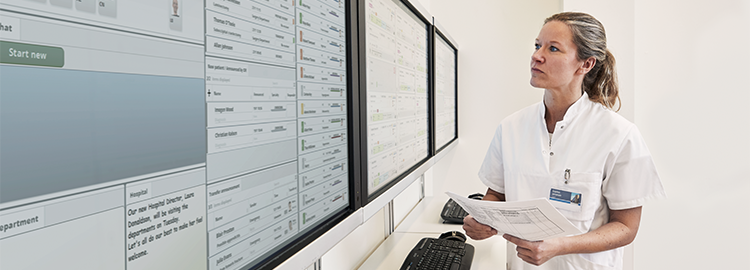Many hospitals still lack the structures needed to manage patient flow effectively – that’s the conclusion of authors reflecting on the COVID-19 pandemic in an article published in Deutsches Ärzteblatt [1]. The consequences? Health risks for patients, mental strain on staff, and financial losses. But what’s behind this?
Patient flow refers to the journey a patient takes from hospital admission through to discharge. As Institute for Healthcare Improvement emphasizes, ensuring the right care, in the right place, at the right time is essential to avoid suboptimal patient outcomes, staff strain, and financial loss [2].
What causes deficits in patient flow management?
One of the main reasons lies in inefficient communication and collaboration within teams — often amplified by outdated information systems. In a survey conducted by the medical community platform sermo [3], healthcare professionals were asked what frustrates them most about communication with colleagues. The top responses were “delayed information about patients” (57%) and “outdated technology and technical issues” (25%).
This reflects a daily reality in many hospitals: delays arise when teams wait for information or updates to be documented before acting – valuable time that is lost from a patient flow perspective and cannot be recovered without real-time visibility. While EMRs play a vital role in documenting care, they capture events after they occur. From a patient flow perspective, however, staff need real-time visibility and coordination tools that enable immediate action — not just retrospective reporting.
When team collaboration doesn’t flow smoothly and information isn’t available in real time, the consequences can be severe: delayed treatments, prolonged lengths of stay, and a higher risk of hospital-acquired complications [4]. Staff are also affected: repeated, often loud (i.e., phone-based) communication caused by unclear or inconsistent information, follow-ups, or redundant checks leads to mental strain and can contribute to burnout [2]. When staff are absent due to illness, financial pressure on the hospital increases, ultimately putting care quality at risk. As Hiller et al. emphasize, the need for structured patient flow management and proactive capacity planning in hospitals is becoming increasingly apparent [1].
Key strategies for improving patient flow include:
Hospitals can address these challenges by taking a structured approach to patient flow. Key strategies include:
- Simplifying patient admission processes
- Using effective bed management techniques
- Optimizing interdepartmental coordination and communication
- Improving discharge planning
- Reducing waiting times and delays in diagnostics and procedures
Conclusion
In a hospital environment where conditions can change in moments, real-time visibility is essential. Patient flow management solutions can help provide this operational awareness — ensuring that teams, resources, and care pathways are aligned to what’s happening now, not what happened minutes ago.
